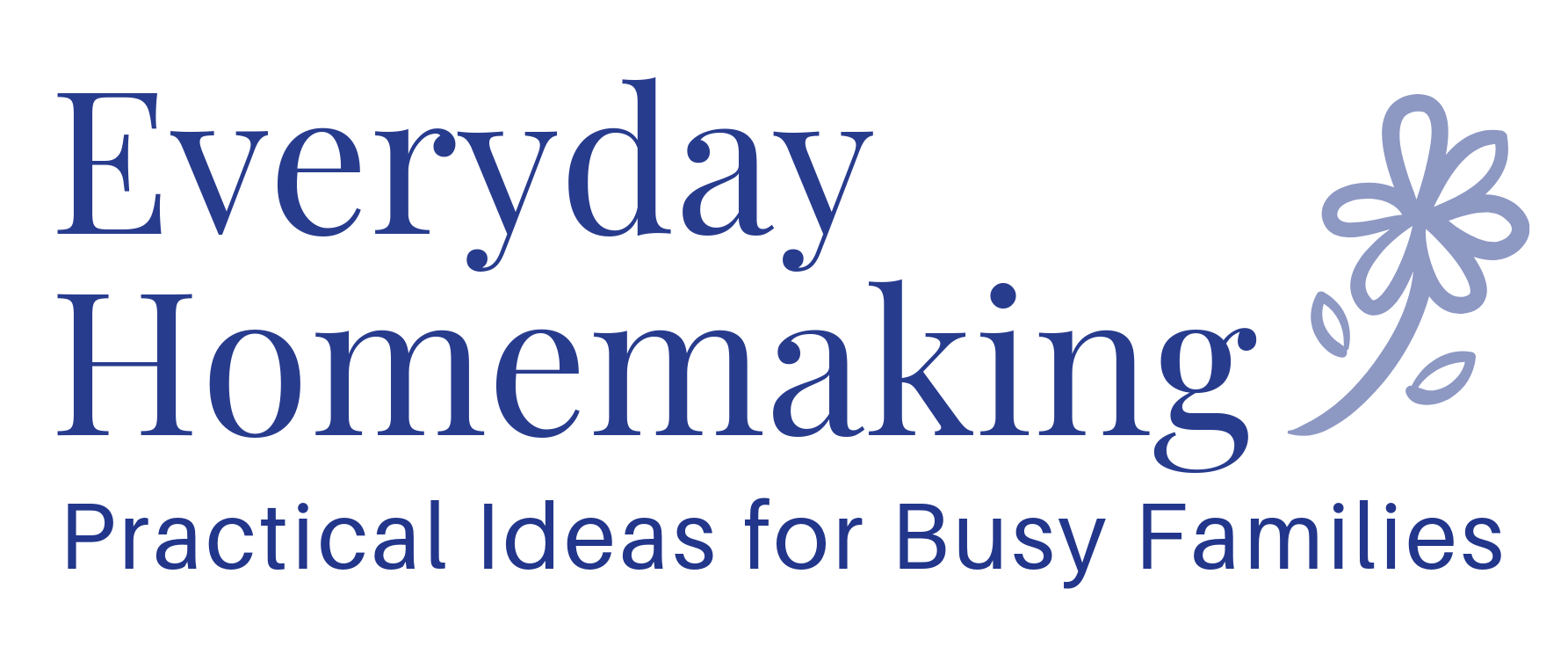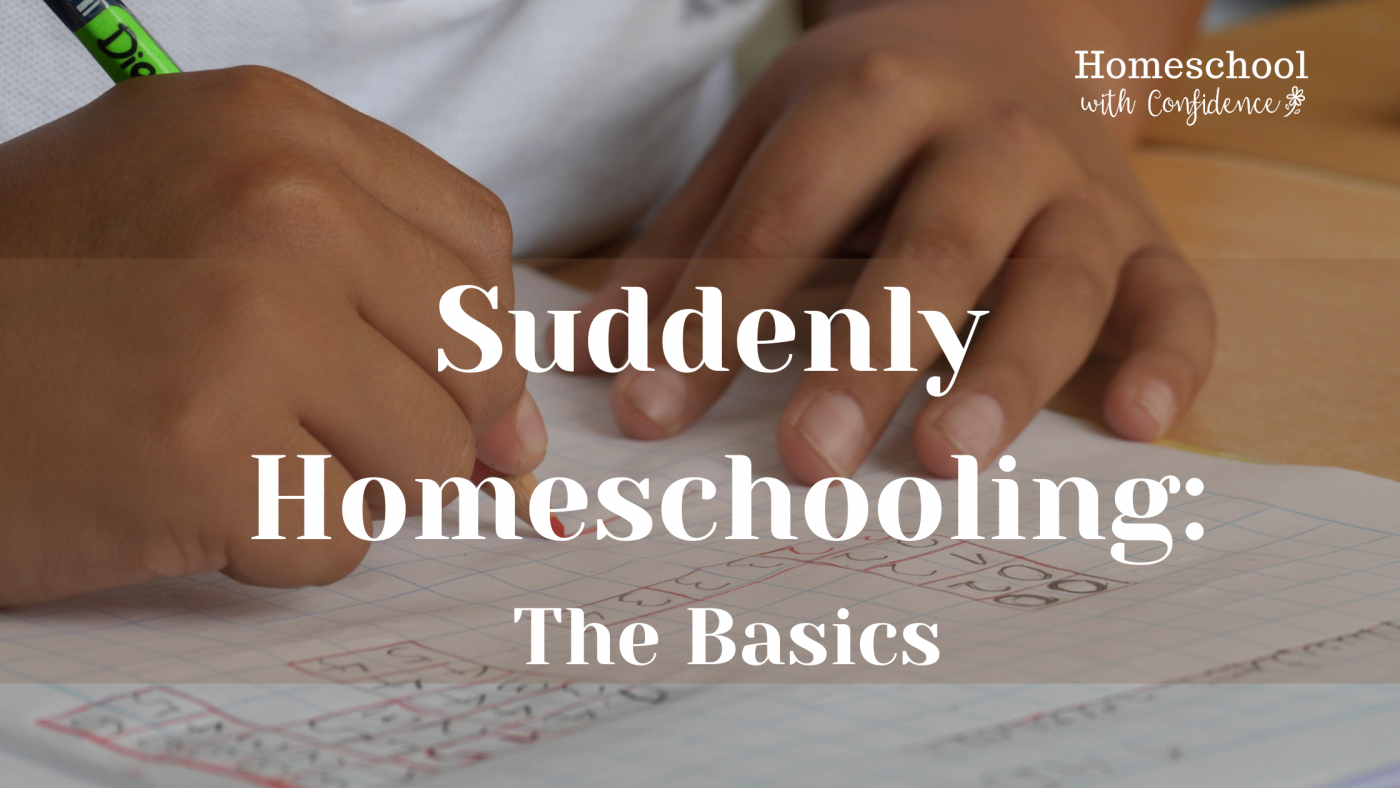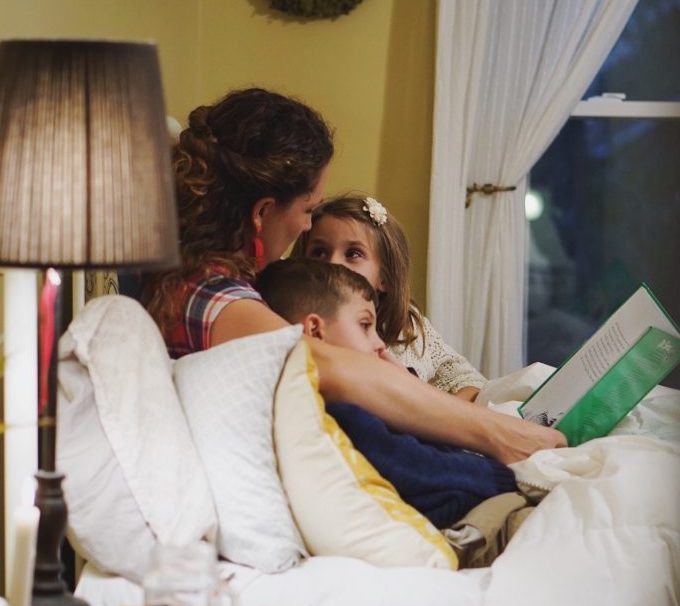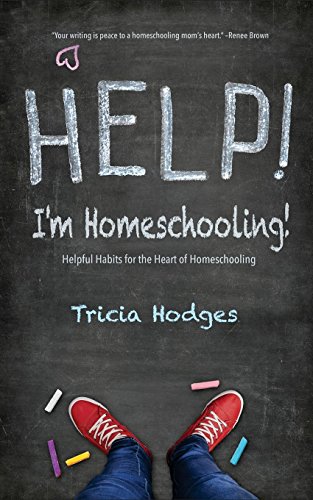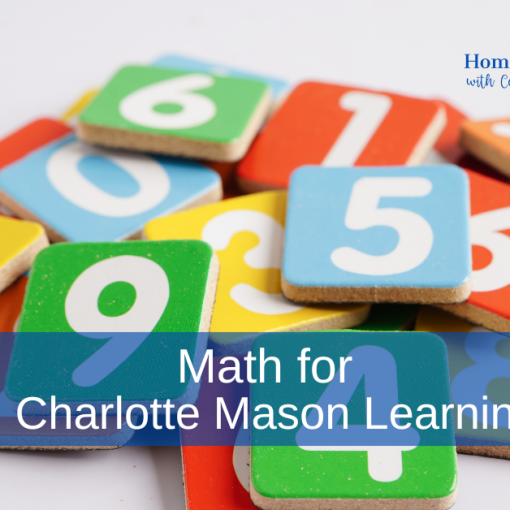[Originally written to support parents during the 2020 pandemic, this guidance remains valuable for anyone now exploring alternatives to conventional schooling.]
Well, you thought life would be back to “normal” by now, but it’s not looking promising. Perhaps you suddenly find yourself considering homeschooling because your local school is not currently an option for your family this fall. Let me share a few basics that I hope will encourage and equip you.
When you make the decision to homeschool because it suddenly seems to be your only choice, where do you even begin?

First Things First
The first step is understanding how to comply with your state’s law. (You can read HSLDA’s synopses of state laws at www.hslda.org). If you need additional legal assistance, members can call HSLDA at 540-338-5600. If you’re not already a member, I highly recommend joining – some of the many benefits include access to not only the legal staff, but also the educational consultant team, covering everything from preschool through high school, including special needs and struggling learners.
Temporary Homeschooling
If your plan is for your child to return as soon as possible to a conventional (public or private) school and he’s simply displaced for the time being, you may want to contact the school to which he will return to find out what they will require for him to be readmitted (this may influence your curriculum choices). This has typically been a pretty straightforward process pre-high school, with most students being admitted to their chronological grade, sometimes after a placement test to be sure they have the necessary basic skills (math and language arts) to move into that level.
But we aren’t sure what this could look like post-Covid-adjustments, so if you plan to rejoin their game, you’ll have to play by their rules—and it helps to know in advance what those are. (And for high school–it gets more complicated with credits. More on this in our Community chat.)
Especially if you are in a “testing” state, you may find it advantageous to provide a baseline test (evaluation or standardized achievement) against which you can gauge progress at the end of the year; the test results are just for your information at this point. (Read more on testing here.)
What about De-schooling?
De-schooling is a fancy term for letting go of the old paradigm and realizing that homeschooling doesn’t have to look like school at home. It may take a month or more to adjust to the idea of facilitating your child’s learning, vs schooling him.
It’s okay to let your kids de-school by simply reading, or learning about something they want to learn about, or taking some virtual field trips, or working on a hobby, or cooking with you, or doing a family project. (Translation: Learning can still happen just in the context of being a family– so enjoy!)
But if you’d feel more comfortable incorporating some low-key activities in core subjects, we’ve got you covered with some everyday activities that reinforce their academic skills, but that don’t necessarily feel like “school.” Another plus is that most of the activities cross the age ranges, so if you have multiple kiddos at home, they can do many of these activities together. (And if you don’t do anything else, read aloud to build skills and relationships!)
- Everyday Activities to Reinforce Language Arts Skills
- Everyday Activities to Reinforce Math Skills
- Social Distancing Sanity-Savers from No Desk Required — a regularly-updated list of freebies offered by companies for such a time as this
- Combat Cabin Fever! is a one-hour Facebook Live video with four HSLDA educational consultants/moms who share ideas for all ages
- Homeschooling and Working from Home is another HSLDA Facebook Live to highlight tips for working at your job remotely with kiddos at home
What about Curriculum?
Curriculum is more than just books—it can include hands-on activities and interests and everyday skills. You can incorporate games of all kinds, storybooks, life skills, and even research or pursuit of a fascinating topic. Have your child retell his day or adventures—or make up a story and write it out or tell it to you. Let your child learn some basic math, physics, or chemistry by helping you measure for repairs or cook a meal.
For a slightly more structured curriculum, online may be your best option right now for a quick start and easy access. (It doesn’t have to be shipped, you can use it anywhere, and you can get started very quickly.) There are online programs that offer a complete curriculum and programs that offer supplementary or individual courses and resources.
There are loads of computer or online schooling options (they change so often–I’ve listed them in our Everyday Homeschooling community page so I can adjust as needed). Many are live/interactive, while others are archived classes; some are available piecemeal as well as total school; many are Christian-based, but some are secular.
If you have mail delivery and would prefer real hard-copy books or workbooks, you could order a packaged curriculum (or specific courses) from companies such as Timberdoodle, My Father’s World, or Sonlight, or Bookshark, or you can choose from a large “menu” of options for each subject from various sources, depending on your preferred approach to learning.
And for an idea of what concepts the average student might cover in a subject in a particular grade, check out “What Should I Be Teaching” (but hold those checklists loosely because children don’t all learn at the same rate in all subjects). Regardless of what you choose, remember that your curriculum is simply a tool—use it, adapt it, modify as needed.
The bottom line is: There is no one “perfect” curriculum—no one “right” way to homeschool. That’s the beauty of home education—you can tailor the plan to your child’s needs!
For more on this:
- Exploring Curriculum Options (video workshop)
- Do I Need a Curriculum for Kindergarten?
- Learning through Play
- Early Learning: The Toddler Years
- Do I Need to Use an Accredited Program?
- Preparing Your Eighth Grader for High School

What Does Homeschooling Look Like?
Think of homeschooling as being purposeful and intentional, often with some goals set and then a (usually written) plan to help you move toward those goals. That plan will typically include some sort of curricular materials and/or community resources (from more formal to much less structured–lots of options!).
Bottom Line: There’s no one “right way” to do this. An online search can give you some examples of what a typical day looks like for a variety of families. Here is just one example for you: A Day in Our Homeschool.
Please note: Homeschooling right now is very different from what everyday homeschooling generally looks like, so I encourage you to not judge “homeschooling” by this experience. Most already-homeschooling parents are also finding themselves quite challenged by the current situation, as they are not accustomed to being confined to quarters or having opportunities closed or limited–they usually take advantage of social and educational opportunities within their local community, such as field trips to museums and parks, music lessons, library visits, clubs, sports activities, and much more.
 My Homeschool Planner – up to 52 weeks of week-at-a-glance planning spreads and LOADS more!
My Homeschool Planner – up to 52 weeks of week-at-a-glance planning spreads and LOADS more!
Finding a New Normal: Start with a Routine
My friend Vanessa shared this bit of wisdom after going through trials of her own: “When life broadsides you, the most important—and difficult—thing to do is re-establish ‘normal.’ ‘Normal’ provides a framework for healing.”
Wherever you are, a routine can help–even if it’s just a temporary adjustment. One of the great things about homeschooling is that it fits around your life—and whatever you need to do in this season. So work your school schedule around your life schedule right now. When you feel incredibly overwhelmed—just start with the basics of normal.
Make a short list of what has to be done. Right now, this probably consists of meals, hygiene, and basic housekeeping — and possibly your work schedule –with homeschooling coming alongside. (That means you can homeschool at any time of day that it works for your family right now.)
In our experience, children whose parents have had to slow down for a period of time on the textbook studies because of family crises often do remarkably well on standardized achievement tests. Not only do they usually do just fine on the tests, they have learned valuable lessons in how to be resilient and resourceful during crisis, how to help one another when under stress, and how to connect and communicate with the people around them.
(And to be honest, right now, even the we’ve-always-homeschooled families are likely leaning toward delight-directed learning, baking a few more cookies than usual, and enjoying those virtual field trips, online ballet lessons, and a Lego marathon. It’s okay–remember what we said earlier? Learning still happens in the context of family – this is not about recreating school at home!)
A Final Note
I understand that you probably have more questions, and I don’t want to overwhelm you! This short post is designed just to give you the basics of starting homeschooling–you can then build on these basics, and I’m happy to help encourage and equip you through:
- Free 1-hour video: So You’ve Decided to Homeschool–NOW What?
- Home Education 101: A Mentoring Program for New Homeschoolers (6-week online mentoring course)
- Homeschool help for you at Everyday Homeschooling exclusive, interactive, membership-based community [Check back to see when this is active again; meanwhile, join us on Facebook]
- Personal one-on-one consultation
- Our homeschool (and homemaking) blog here for you (topics such as what to teach, grading–yay or nay?, preschool, and more)
- Our Facebook page at Everyday Homeschooling
A few of my favorite picks….
Help! I Just Pulled my Kids Out of School: Guidance From 17 Years of Homeschooling The Unhurried Homeschooler: A Simple, Mercifully Short Book on Homeschooling
The Unhurried Homeschooler: A Simple, Mercifully Short Book on Homeschooling The Successful Homeschool Family Handbook
The Successful Homeschool Family Handbook The Four-Hour School Day: How You and Your Kids Can Thrive in the Homeschool Life
The Four-Hour School Day: How You and Your Kids Can Thrive in the Homeschool Life Home Education 101: A Mentoring Program for New Homeschoolers
Home Education 101: A Mentoring Program for New Homeschoolers The Ultimate Book of Homeschooling Ideas: 500+ Fun and Creative Learning Activities for Kids Ages 3-12 (Prima Home Learning Library)
The Ultimate Book of Homeschooling Ideas: 500+ Fun and Creative Learning Activities for Kids Ages 3-12 (Prima Home Learning Library) The Read-Aloud Family: Making Meaningful and Lasting Connections with Your Kids
The Read-Aloud Family: Making Meaningful and Lasting Connections with Your Kids Teaching from Rest: A Homeschooler’s Guide to Unshakable Peace
Teaching from Rest: A Homeschooler’s Guide to Unshakable Peace Everything You Need to Know about Homeschooling: A Comprehensive, Easy-to-Use Guide for the Journey from Early Learning through Graduation
Everything You Need to Know about Homeschooling: A Comprehensive, Easy-to-Use Guide for the Journey from Early Learning through Graduation The Simple Homeschool Journey: Building a Family, Not Just a Transcript
The Simple Homeschool Journey: Building a Family, Not Just a Transcript Homeschooling: The Early Years: Your Complete Guide to Successfully Homeschooling the 3- to 8- Year-Old Child (Prima Home Learning Library)
Homeschooling: The Early Years: Your Complete Guide to Successfully Homeschooling the 3- to 8- Year-Old Child (Prima Home Learning Library) Delight Directed Learning: Guide Your Homeschooler Toward Passionate Learning (The HomeScholar’s Coffee Break Book series 2)
Delight Directed Learning: Guide Your Homeschooler Toward Passionate Learning (The HomeScholar’s Coffee Break Book series 2) Home Learning Year by Year, Revised and Updated: How to Design a Creative and Comprehensive Homeschool Curriculum
Home Learning Year by Year, Revised and Updated: How to Design a Creative and Comprehensive Homeschool Curriculum Homeschooling on a Shoestring: A Jam-packed Guide
Homeschooling on a Shoestring: A Jam-packed Guide Help! I’m Homeschooling!: Helpful Habits for the Heart of Homeschooling
Help! I’m Homeschooling!: Helpful Habits for the Heart of Homeschooling You Can Teach Your Child Successfully: Grades 4-8
You Can Teach Your Child Successfully: Grades 4-8 The Three R’s
The Three R’s Language and Thinking for Young Children
Language and Thinking for Young Children Dr. Beechick’s Homeschool Answer Book
Dr. Beechick’s Homeschool Answer Book Biblical Psychology of Learning
Biblical Psychology of Learning Teaching Kindergartners
Teaching Kindergartners The Everyday Family Chore System: Raising Kids Who Help at Home
The Everyday Family Chore System: Raising Kids Who Help at Home
_______________________________
Photo Credit for blog photos: Rebekah McBride at No Desk Required; the author; and Unsplash.com.
Parts of this article were adapted from these previously published articles by the same author: “Homeschooling after Hurricane Harvey,” “Starting to Homeschool after Conventional School;” and“When Life Broadsides Your Homeschool” at www.hslda.org.
